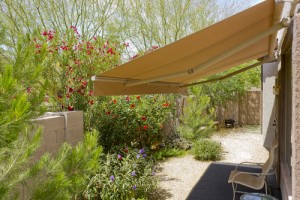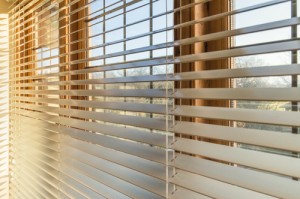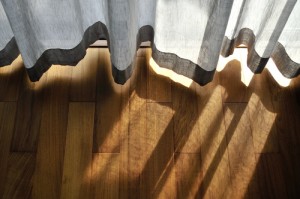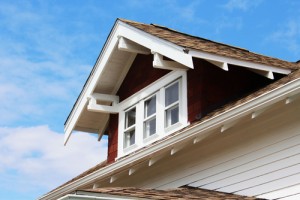Window Treatments Complete the Look of Your Dream Home—and Save You Money
If your chosen house plan offers lots of windows for light this also means the potential for high heat gains and losses as the seasons change. But worry not—there are several options for window treatments to save you money that can complete the look of your home at the same time.
Awnings
Awnings are versatile structures built onto the outside of your home above the windows. These days they are typically made of synthetic fabrics which are treated for water and mildew resistance, which greatly extends the life of your awning material.
It is also possible to have awnings built with solar panels, thus maximizing the energy efficiency of the construction. These tend to offer a more seamless look with the outside of the home, as opposed to having a few solar panels mounted to the roof. They serve the same purpose as fabric awnings, in that they block and redirect sunlight from entering into the home through the windows. However, they are storing energy at the same time for use elsewhere in your home. It is a very efficient, if sometimes costly, option.
Blinds
Inside blinds are affixed to the tops of windows and can be raised and lowered to adjust sunlight entering the room. Exterior blinds are usually made out of steel, aluminum, wood, or vinyl. These are also mounted atop the windows and are lowered into tracks; when the blinds are fully lowered, the slats come together to block the light. If partially raised or lowered they can help with air ventilation and indirect light levels.
As a general rule, blinds are more successful at blocking heat in the summer months than they are at keeping it in in the winter.
Drapes
While most people will consider draperies in their decorating schemes, they often do not realize that material and aesthetic choices have a big impact on the heat levels in the room. Simply sewing a light-blocking panel to the back of each curtain can make a huge difference in summer heat reduction and winter heat retention. For maximum efficiency, drapes should be allowed to hang down to the window sill or the floor, and should be affixed to the wall at the top, thus sealing in the air between the window and the fabric.
Overhangs
If built properly, overhangs can be one of the very best heat solutions your house can have, especially if you are working with a large southern exposure. Overhangs can direct sunlight away in summer and allow light to enter in winter, but use caution: well-designed overhangs are usually built in during the home construction process, as they require a high degree of expert knowledge to place them appropriately.
Some of the elements to consider when adding overhangs are the latitude of the property, illuminance levels, window size and type, and regional climate. When you choose a house plan that can be customized your architect can include overhangs that meet the placement requirements for energy efficiency and aesthetic appeal.




